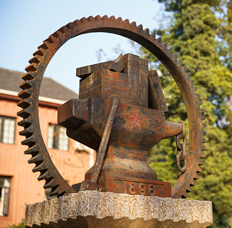FT Attempts To Rank Best MBAs For Women
Publisher : MBA Office Mar.19,2018
With many business schools in an aggressive race to reach gender parity, the Financial Times has produced a new ranking that is sure to get a lot of attention. The British newspaper today (March 5) parsed the data from its latest global MBA ranking to produce a list of the best full-time MBA programs for women.
And the envelope please?
The FT named Shanghai Jiao Tong University the overall winner, followed by Stanford Graduate School of Business, UC-Berkeley Haas School of Business, Washington University’s Olin School of Business, and Harvard Business School.
ASIAN MBA PROGRAMS STAGED AN IMPRESSIVE SHOWING
U.S. schools fared exceptionally well in the new ranking, with a dozen American MBA programs in the top 20. Asian schools, however, also managed to stage an impressive showing, capturing four of the top 10 positions. Besides No. 1 Jiao Tong, the University of Hong Kong was in sixth place, Renmin University of China of Business was came in eighth, and Nanyang Business School in Singapore was tenth.
The first European school on the new FT list was ESADE Business School in Spain, ranked 11th, while IESE Business School, also in Spain, came in 11th. London Business School was ranked 16th, while INSEAD placed 23rd.
The strong showing by Asian schools was partly attributed to the purchasing power adjustment the FT makes to salaries for women MBA alumni which accounted for 15% of the methodology. Still, the Asian schools generally showed higher percentages of both female students and faculty—and their alumni generally reported the biggest increases over pre-MBA pay three years after graduation.
HIGHEST ALUMNI SALARIES FOR WOMEN ALL AT U.S. SCHOOLS
The highest average salaries achieved by the women graduates of the full-time MBA programs three years after graduation were at Stanford GSB ($197,791), UC-Berkeley ($179,930), Wharton ($172,489), Harvard ($171,587).
Women MBAs from 20 of the 50 ranked schools were able to more than double their pre-MBA salaries three years after graduation. But in some cases, the post-MBA gains were truly spectacular. At No. 1 Shanghai Jiao Tong University, women graduates told the FT their current salaries were 224% above what they had made before going back to school. At Renmin University of China School of Business, the MBA bump came to 180%, while at the Indian School of Business, it was a 177% increase over pre-MBA pay for women.
U.S. MBA programs where women scored the biggest increases in pay were Washington’s Olin Business School (153%), Rochester Simon (141%), Indiana Kelley (133%), Cornell Johnson (125%), UNC Kenan-Flagler (117%), Dartmouth Tuck (116%), Chicago Booth (114%), Washington Foster (113%), USC Marshall (113%), Rice Jones (112%), and Berkeley Haas (110%),
DOES THE FT METHODOLOGY REALLY IDENTIFY THE BEST MBAS FOR WOMEN?
The list will likely spark a controversial debate over how to actually measure more supportive and encouraging MBA cultures for women, something that the FT can’t quite accurately measure by slicing and dicing an existing survey meant for something else. The methodology used by the newspaper places a 45% weight on alumni salaries alone, with 15% given to the average female alumnus salary three years after graduation, another 15% for increases in salary over pre-MBA pay, and yet another 15% for what the FT calls the “gender pay gap,” described as average female salary as a percentage of average male salaries from the same school.
None of those measures tell you anything about how female friendly or welcoming a business school culture might be to women. Much of the variation in these numbers is more likely the result of a confluence of factors, including school brand, industry choice, job location, or the purchasing power adjustment to the numbers which tend to inflate salaries in Asia.
The FT puts 15% of the weight on the percentage of female MBA students, 10% on the percentage of female faculty, and 5% on the percentage of women on a school’s advisory board. Then, the newspaper sifted through the results of its alumni survey for only the female responses to metrics it has long measured in its global MBA ranking: international mobility (6%), value for money (5%), career progress (5%), aims achieved (5%), and alumni opinions of the effectiveness of their career services office (4%).
THE RANKING MAY ACCELERATE THE RACE TOWARD GENDER PARITY
Arguably, the only metrics that even remotely reflect whether a business school has a welcoming, collaborative and inclusive community are the percentage of female students and faculty. There were no surveys of female alumni that probe whether enough women held leadership roles in student-run clubs and organizations, or whether faculty gave women an equal chance to participate in classroom discusions, or whether women received a proportionate share of the high honors in these MBA programs compared to men. And there was no survey that asked women core questions about the commitment of an administration, staff, faculty and fellow classmates to forge an inclusive culture of achievement and an equal playing field where success is determined by merit and work—not gender or skin color.
Another important cautionary note concerns the sample size of the FT’s alumni survey. When you slice and dice already thin data, the results quickly become less meaningful and less credible. Removing 70% or more of the respondents (the percentage of men who likely completed the surveys) from a school’s sample size is bound to be less reliable and subject to error.
Nevertheless, the ranking itself may very well cause business school deans to more consciously advocate changes that would make their school cultures, long dominated by men, more receptive to women and more welcoming to them. At Washington University’s Olin School of Business in St. Louis, which did better than Harvard on this list, Dean Mark Taylor noted that women faculty was an “area of opportunity” because only 24% of Olin’s full-time faculty are female. In the school’s last round of faculty hiring last year, he noted, all five new faculty members were women.
WOMEN MAKE MORE MONEY THAN MEN AT JUST FIVE SCHOOLS
The ranked school with the lowest percentage of both female students and faculty? IMD in Switzerland. Though ranked 47th on the best list for women MBAs, the FT reports that only 13% of IMD’s faculty and 23% of the school’s students are women.
The FT data shows that women actually are making more money than their male counterparts at five schools: Jiao Tong University, where female alumni make 101% of what the men make; UC-Berkeley Haas, where women make 103% of the male alumni; the University of Rochester’s Simon School of Business (111%), and Copenhagen Business School (127%),
The biggest gender pay gaps among the schools ranked by the FT? Imperial College Business School in London, where female alums make only 63% of what the male alums make three years after graduation; Edhec (64%), Oxford Said (67%), Durham University Business School in the United Kingdom (69%), and Yale University’s School of Management (69%).
SOURCE: POETS & QUANTS
BY: John A. Byrne
https://poetsandquants.com/2018/03/05/the-fts-new-ranking-of-the-best-mbas-for-women/?utm_content=68422131&utm_medium=social&utm_source=linkedin&from=groupmessage&isappinstalled=0








